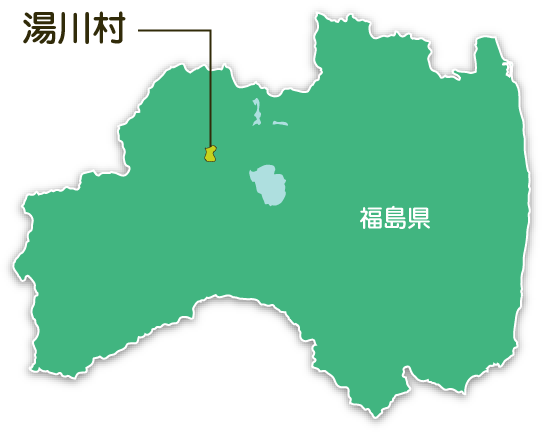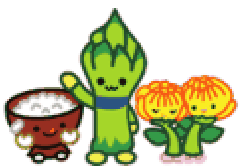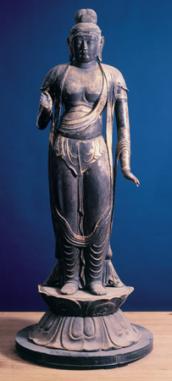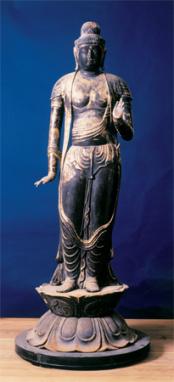湯川村役場
〒969-3593
福島県河沼郡湯川村大字清水田字長瀞18番地
TEL:0241-27-8800(代表)
FAX:0241-27-3760


湯川村イメージキャラクター
「湯川村ファミリー」
左から、
「ゆがわまいちゃん」
「アスパラくん」
「二輪菊シスターズ」
| A national treasure |
| (designated June 27, 1996) |
|
Shojoji's statue of the healing Buddha is one-of-a-kind. Measuring 1.37 meters in height, the wooden statue was carved from a large trunk of zelkova. After being carved, the statue was then split in half (front-to-back), hollowed out, rejoined, and lacquered to form the statue. Most of the detail of the carving is still in remarkably good condition, and in this detail one can see stylistic elements from the early Heian period which attempted to preserve the style of the earlier Nara period (late eighth century). The sculptor's combination of solemnity and majesty is superb.
Through the ages, the halo has suffered some damage and loss, but originally it was a beautiful arabesque in the classic Heian period style. The halo depicts a heavenly paradise of interwoven grape leaves carved in relief, adorned with a host of several flying angels (hiten). Today, only one of those accompanying angels remains attached.
This Healing Buddha is the principal statue of the present Buddha hall. Previously, this was the principal image of the Great Hall until it was moved to the Buddha hall in the early 1400s.
| National treasures |
| (redesignated June 27, 1996) |
 Gakkou bosatsu |  Nikkou bosatsu |
Accompanying the principal image of the Healing Buddha, these two images of the Buddha's attending Bodhisattvas (Nikkou bosatsu and Gakkou bosatsu) are equally magnificent. These statues, each carved from the single trunk of a zelkova tree, are made using a method of dry lacquering from the Tempyou period (circa 757). Clearly a set, the graceful style of the tall and voluptuous figures of these two images complements the style used in the central image of the Healing Buddha. Also notable, the stature of these two bodhisattvas seems much larger than that of other Nikkou and Gakkou bosatsu from other ages. This is due to the tendency during the Tempyou era to make Bodhisattvas larger than in earlier ages. The lotus blossom pedestals of each figure are also fashioned in that period's style.
These statues were originally designated national treasures in 1903; however, it was later realized that the names of Nikkou and Gakkou had been mistakenly reversed. When this was realized, the statues were redesignated under their correct names in 1996.